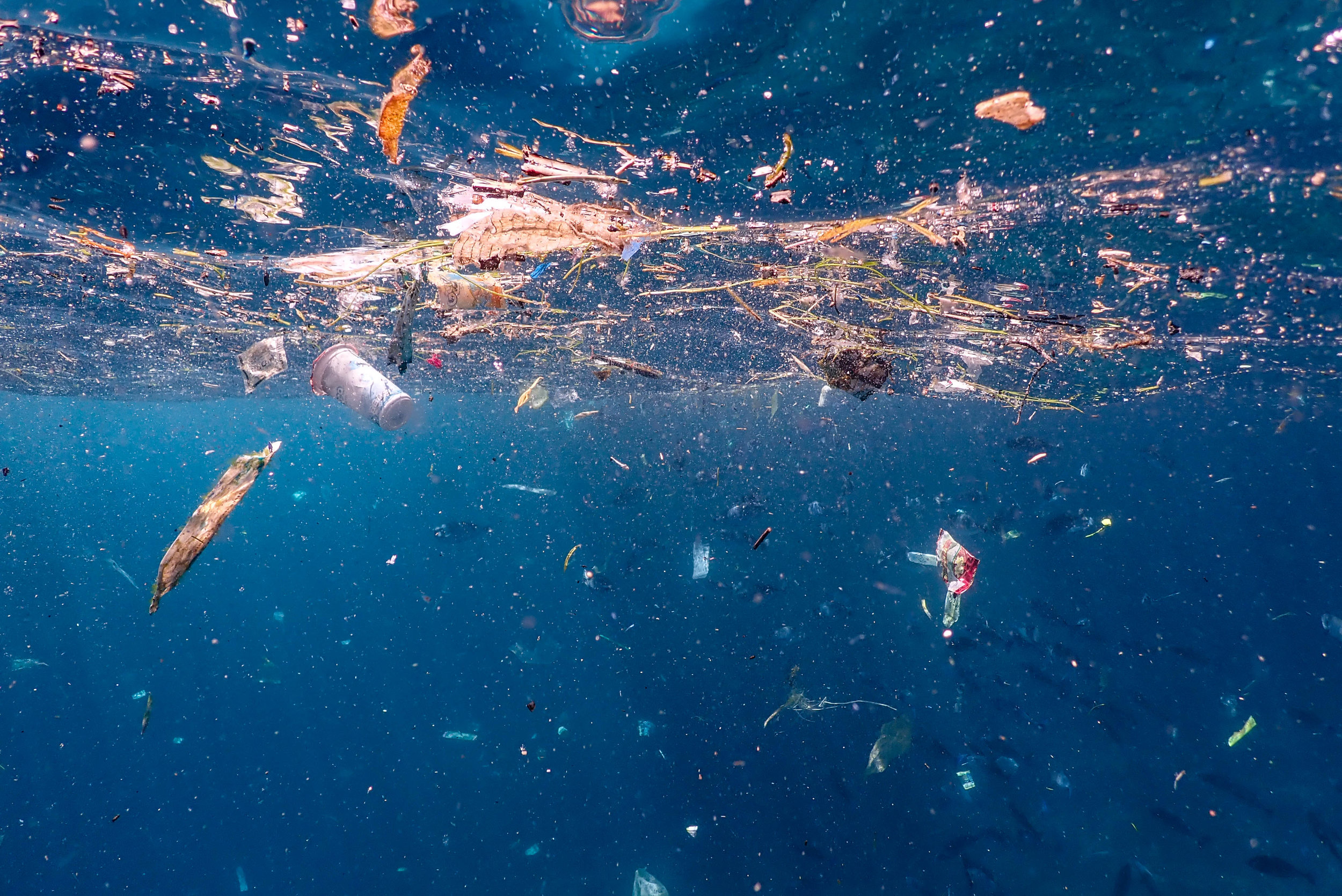Toxic Times: The Little Known Impact of Plastic on Marine Life
Rose Boardman
Plastic is now a big part of the ocean and it’s well known that it can cause direct physical harm to marine species via entanglement, ingestion, and suffocation. However, did you know that plastic trash is also full of toxic chemicals!? These hidden compounds, which may be part of the plastic material or on its surface, can cause physiological and neurological harm to marine plants and animals. But these toxic threats have received little attention...until now.
Plastic floating in the ocean can absorb chemicals and pollutants from the surrounding water. Photo: Brooke Pyke
The chemical soup
Chemicals associated with plastics come under three categories
Chemical additives (metals, dyes, flame-retardants, UV stabilisers, antioxidants, antimicrobials) which improve qualities such as performance, aging and functionality
Byproducts of manufacturing (polymerisation solvents, plasticisers, surfactants, suspension aids, and unreacted monomers - eg. BPA)
Chemicals absorbed from the surrounding environment
The possible toxicological responses in organisms caused by plastic may be due to a combination of all of these chemicals. And not surprisingly, complex mixtures of substances have also been shown to have greater toxicity than single chemicals.
Chemicals in categories 1 and 2 are not chemically bound to the plastic polymer, which means they can easily leach out in the environment - forming leachate. The surface of plastics also attract hydrophobic (water hating) organic chemicals from the environment, including persistent organic pollutants (POPs). Many things are important factors affecting these processes, including the size of plastic particles. The smaller the particle, the higher its surface area to volume ratio, increasing its capacity to release and bind compounds. This means microplastics (particles less than 5 mm in size) are a key concern. Their small size also means that a vast array of marine organisms can consume them, and potentially be exposed to the associated chemicals.
The potential for plastics to act as carriers for marine pollutants (Category 3 above) into marine organisms is still unclear, with several modelling studies demonstrating that the exposure pathway via plastic ingestion is minimal compared to other exposure pathways (e.g. diet). However, plastic leachate is a concern due to the vast amounts of plastic debris in the ocean.
Chemicals from plastic vary considerably in their potential toxicity. Many chemicals that have been found associated with plastic debris are defined as priority pollutants, such as heavy metals (e.g. lead, copper, and cadmium), pesticides, polycyclic aromatic hydrocarbons (PAHs), and polychlorinated biphenyls (PCBs). They can cause physiological disruptions leading to diseases and reproductive issues, and are incredibly persistent in marine food webs. Of the priority pollutants identified by the EPA and the EU, 78% and 61% (respectively) have been found associated with plastic litter.
Pesticides used on land leach into the sea via river runoff, and become concentrated on the surface of plastics in the ocean. Photo: Pixabay
What are the impacts on marine life?
The chemical substances used and added during the manufacturing of plastic are a source of concern, as are the pollutants that are already in the ocean that concentrate on plastic debris. This chemical cocktail is absorbed into the bodies of marine organisms, leading to a wide variety of effects…
For example, a toxic chemical called tributyltin (TBT - used as a yellowing agent in clear plastics and also in many antifouling paints) was shown to cause hormone disruption in molluscs. These hormone disruptions caused imposex, which is when the female snails develop male sex organs. This, as you can imagine, will lead to uneven sex ratios and have detrimental impacts on the population.
Another study investigated the impact of water containing plastic leachate from seven categories of recyclable plastics on larval survival and settlement of the barnacle Amphibalanus amphitrite. Leachates from the plastics significantly increased barnacle nauplii (first larval stage) mortality (death). Plastic leachates also prevented a lot of the barnacle cyprids (the growth phase before settlement) from settling, which is vital part of development.
Smaller plastic particles have a higher capacity to absorb and release toxic chemicals. Photo: Carissa Cabrera
And here is the epitome of it all…. new research has just found out that the chemicals leaching from plastic pollution are affecting the species of bacteria that provide the planet with 10% of its oxygen! Prochlorococcus, the oceans most abundant photosynthetic bacteria (with a global population of three octillion ~1027) is a key player in the global carbon cycle, and exhibited reduced growth, photosynthesis, and oxygen production when exposed to chemicals leached from plastic grocery bags (HDPE) and PVC matting.
These are just a few of the variety of documented toxic effects of plastics and their associated chemicals. There are an estimated 5.25 trillion pieces of plastic debris in the ocean, and EcoWatch estimates that 40% of the world’s ocean surface is not even ocean anymore, but plastic debris. As research continues to reveal new impacts of plastic on marine life, beyond the known physical effects such as ingestion and entanglement, it’s even more vital that we reduce our plastic consumption, to help turn the tide and prevent more toxic chemicals from entering the ocean.
Want to find out more about the toxicity of chemicals from plastic?
Here’s some suggested reading for you.
This month, The Marine Diaries will be sharing our knowledge on plastic pollution to help educate the public about the impact of our actions on marine life, in the hope of promoting change. Together we can fight plastic.
Want to become part of a community striving to reduce their plastic use? Join our Facebook group



